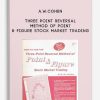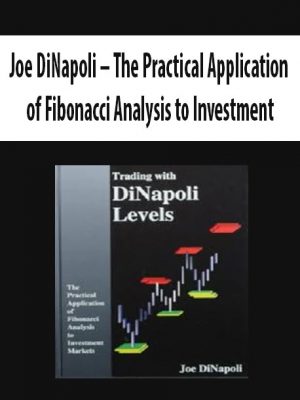Cycle Analysis Workshop Forex Course by Slim
$997.00 Original price was: $997.00.$187.00Current price is: $187.00.
Proof of item:

Be more successful as a trader or self-directed investor.
Benefit from understanding the energy forces in the market
That, until now, you did not know existed!
IF YOU ARE SOMEONE who would like:
Be more successful as a trader or self-directed investor
Build a sustainable business career
Better identify commercial entrances and exits
Stop making losing trades bigger than winning trades
End your confusion about technical analysis and
Learn the true predictive value of charts
Then you are in the right place!
Improve your trade or investment
learning a completely different style of analysis than just a few …
Welcome to the askSlim cycle analysis workshop
There are countless styles of technical analysis and hundreds of studies that can be applied to the data in the graph. The range of methods ranges from simple bar graphs with trend lines to sophisticated computer controlled algorithmic analysis. It can go from so simple, that it has little predictive value, to so complicated that it stuns the mind. Therefore, the human analyst often gains little from the information and does not easily grow as a self-directed trader or investor.
In this course, Slim will take you through a comprehensive learning process. Each module is based on the previous one. Slim’s clear teaching approach will lead you to a great understanding of this style of graphics.
This course is for operators of all levels who have a basic understanding of graphics. In the more than 20 videos, you will learn the analysis of the cycle from the basic definitions and the “Principles”, through the identification of the cycle and the meaning of the intricate energy layers and the correlations of the tables of various periods of weather.
As a result of this program, you:
Learn how to take a simple chart and turn it into your “canvas”; A place to illustrate, create images, and store your analytical work, projections, annotations, and ideas. So nothing is lost and everything is there for you when you return as you analyze and connect to your own business universe.
Build on your layered graphics, like an artist, adding cycle patterns, momentum gauges and other key studies to your image, projecting time and price. Delve deeper into your understanding of natural rhythms in stocks, futures, indices, and ETFs.
Use your new knowledge to establish directional bias, trading ideas, and manage transaction size based on your best understanding of current opportunities or market changes.
Increase your investment or business profit / loss percentage with improved inputs, outputs, and knowledge of how to handle big impulses in the markets.
In each module you get:
Module 1 – Introduction: How Slim came to cycle analysis and the introduction to “The Book,” “Profit Magic of Stock Transition Timing,” JM Hur
Module 2 – Basics of “Cycle Analysis:” How cycles show up in nature – The basic language with a downloadable glossary
Module 3 – Hurst’s “Eight Principals of Cycle Analysis” This is the core of the work, graphically explained in detail, with downloadable definitions of each of Hurst’s Principals
Module 4 – Identifying Cycles: Learn to place “Cycle Brackets” by identifying the energetic forces, use of multiple time frames. Operate more intuitively, thus improving sense of market direction and trade bias
Module 5 – Tools to Help Identify Cycles: Using moving averages, oscillators, enveloping and more to improve your ability to ID cycle patterns
Module 6 – The Deeper Meaning of Cycles of Varying Length: Study he interworking of dominant & minor cycle patterns applying the “Principal of Summation” to sense trend quality and changes
Module 7 – Defining Trend: Learning the embedded code of cycle shapes, configurations and translations. Applying Slim’s tools that help, including Slim Ribbons and Projection oscillator
Module 8 – Dealing with Cycle Confusion: Solving changes in cycle lengths, phase shifts, dominance, and learning what the changes mean
Module 9 – How Cycles Create Chart Patterns: See how the amazing interworkings of cycle patterns create “Head & Shoulders” “M” “V” “Flags” “Pennants” and many more. Learn the important messages that come as these formations appear
Module 10 – Effects of Momentum on Cycle Patterns: Slim reviews his favorite momentum indicators in detail, and shows the correlation between momentum and cycle patterns
Module 11 – Using Candlesticks to ID Peaks and Troughs: A look at many candlestick patterns; the strong messages they provide about turning points in cycle patterns
Module 12 – Gaps and Cycle Patterns: A look at four types of gaps and the messages they provide to great opportunities
Module 13 – VTLs (Valid Trend Lines): Learn a great tool to help identify trend and cycle breakouts and breakdowns
Module 14 – Setting Alerts: After building an analytical universe, there is a lot to follow. Let the trading platform help alert you to specific situations and opportunities with VTLs, trendlines and price levels
Module 15 – Price & Directional Projections: Using the information from cycle shapes to make directional projections, establish price targets and identify changes in strength conditions
Module 16 – Swing High, Swing Low Analysis: Improve entry and exit location by identifying support/resistance zones
Module 17 – Intraday Cycles: How to best use cycle analysis if you are a day trader or scalper – Cycles on intraday charts
Module 18 – Cycle Synchronicity – Major Market Messages: Stock charts synchronize, helping identify major market peaks and troughs. Slim looks at market leaders at historical bull market tops and bottoms and applies the information to current times
Module 19 – Putting it all Together: This is a review of what has been learned, building your analytical universe and how to deal with the challenges that will arise as we develop into cycle analysts
Forex Trading – Foreign Exchange Course
Want to learn about Forex?
Foreign exchange, or forex, is the conversion of one country’s currency into another.
In a free economy, a country’s currency is valued according to the laws of supply and demand.
In other words, a currency’s value can be pegged to another country’s currency, such as the U.S. dollar, or even to a basket of currencies.
A country’s currency value may also be set by the country’s government.
However, most countries float their currencies freely against those of other countries, which keeps them in constant fluctuation.
1 review for Cycle Analysis Workshop Forex Course by Slim
Sorry, no reviews match your current selections
Q & A
Ask a question
Your question will be answered by a store representative or other customers.
Thank you for the question!
Your question has been received and will be answered soon. Please do not submit the same question again.
Error
An error occurred when saving your question. Please report it to the website administrator. Additional information:
Add an answer
Thank you for the answer!
Your answer has been received and will be published soon. Please do not submit the same answer again.
Error
An error occurred when saving your answer. Please report it to the website administrator. Additional information:
Related products
Forex & Trading
Forex & Trading
Forex & Trading
Forex & Trading
Forex & Trading
Forex & Trading
Joe DiNapoli – The Practical Application of Fibonacci Analysis to Investment Markets













Very nice, new, set! | Cycle Analysis Workshop Forex Course by Slim